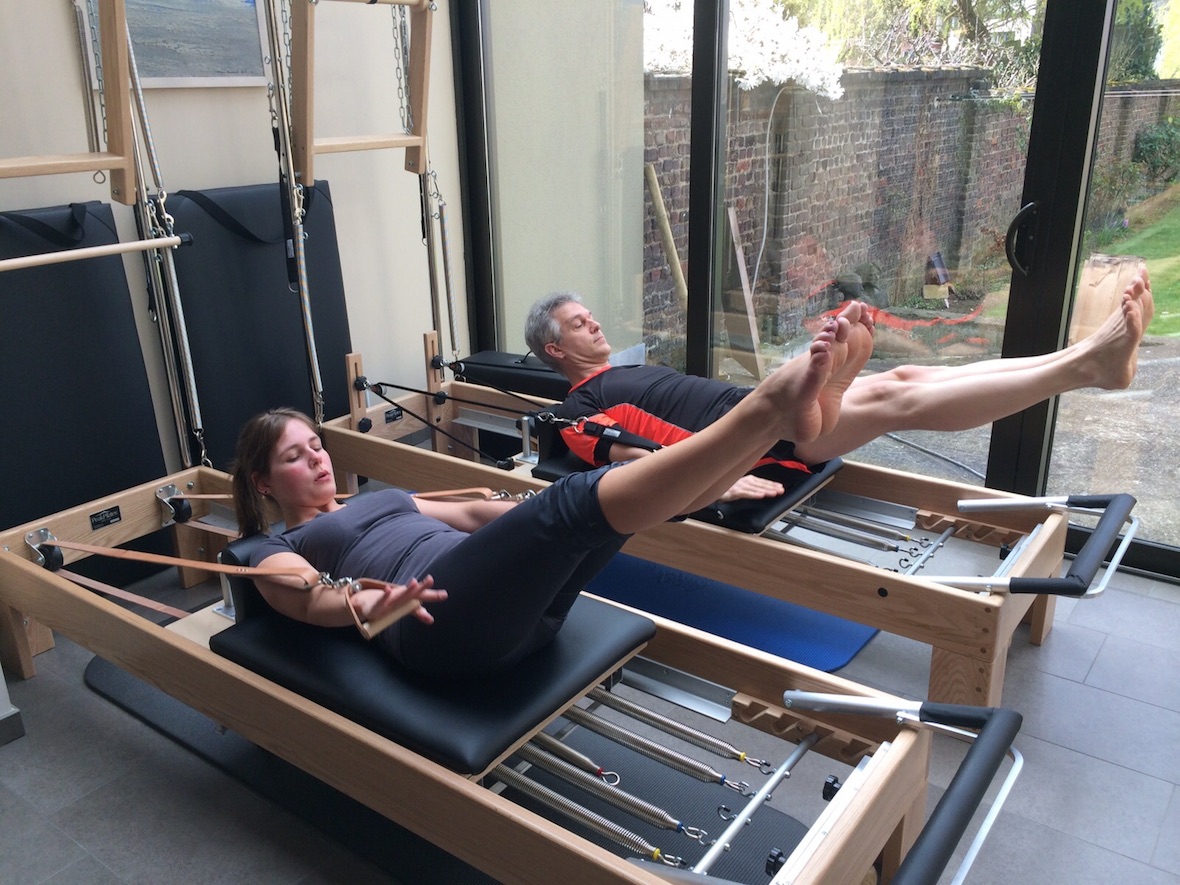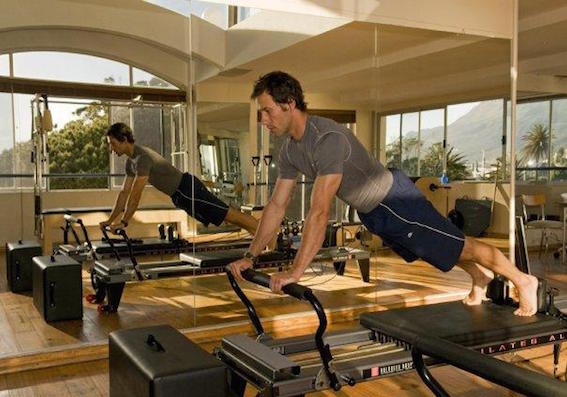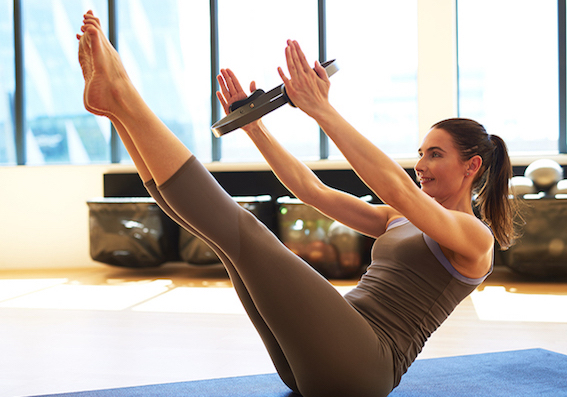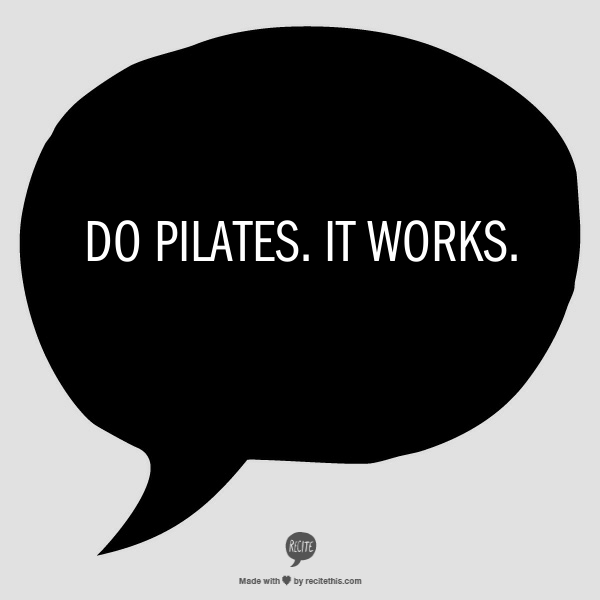Learn the Basics that Set Pilates Apart from Other Exercise Methods

Pilates op het Reformer-toestel
Core Strength
Core strength is the foundation of Pilates exercise. The core muscles are the deep, internal muscles of the abdomen and back. When the core muscles are strong and doing their job, as they are trained to do in Pilates, they work in tandem with the more superficial muscles of the trunk to support the spine and movement.
As you develop your core strength you develop stability throughout your entire torso. This is one of the ways Pilates helps people overcome back pain. As the trunk is properly stabilized, pressure on the back is relieved and the body is able to move freely and efficiently.
The 6 Pilates Principles: Centering, Control, Flow, Breath, Precision, and Concentration
These six Pilates principles are essential ingredients in a high-quality Pilates workout.
The Pilates method has always emphasized quality over quantity, and you will find that, unlike many systems of exercise, Pilates exercises do not include a lot of repetitions for each move. Instead, doing each exercise fully, with precision, yields significant results in a shorter time than one would ever imagine.
Pilates is a Unique Method of Exercise
Core strength and torso stability, along with the six Pilates principles, set the Pilates method apart from many other types of exercise. Weight lifting, for example, can put a lot of attention on arm or leg strength without attending much to the fact that those parts are connected to the rest of the body. Even running or swimming can seem like all arms and legs, with either a floppy or overly tense core. Ultimately those who really succeed at their sport learn to use their core muscles, but in Pilates, this integrative approach is learned from the beginning.
Mat Work and Equipment
Pilates exercises are done on either on a mat on the floor, Pilates mat work, or on exercise equipment developed by Joseph Pilates.
The workout equipment that we use in Pilates generally utilizes pulleys and resistance from the participants own body weight on the machine and graduated levels of springs. The reformer is probably the best-known piece of resistance equipment that you will encounter at a Pilates studio.



 Pilates Ring or Power Circle:
Pilates Ring or Power Circle: